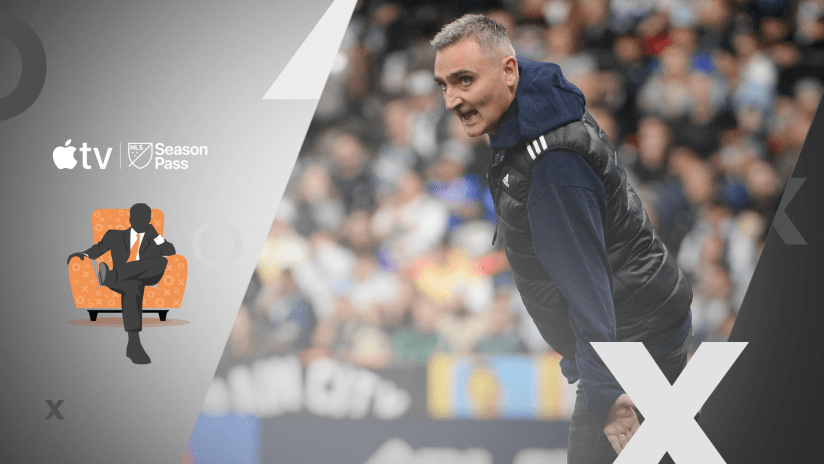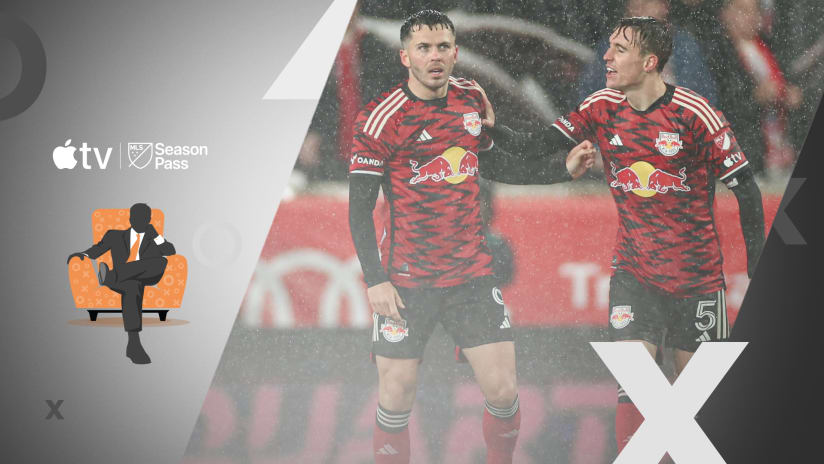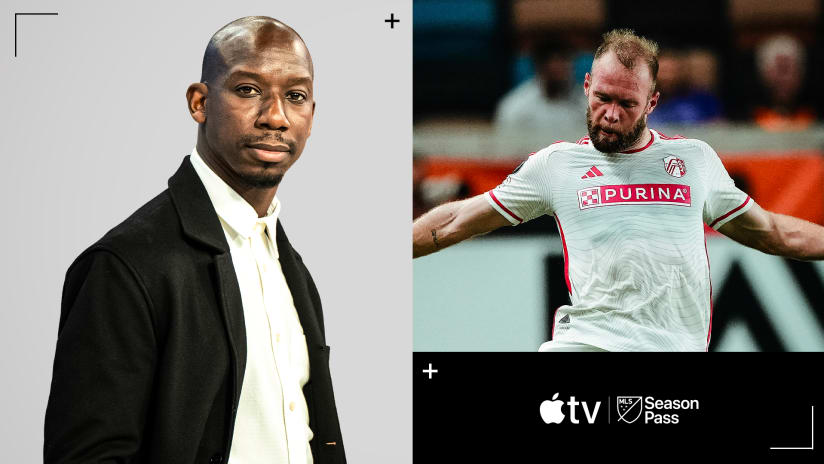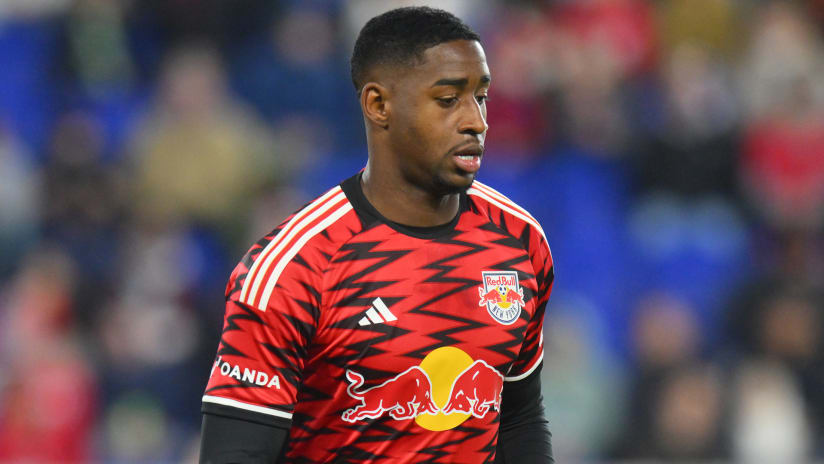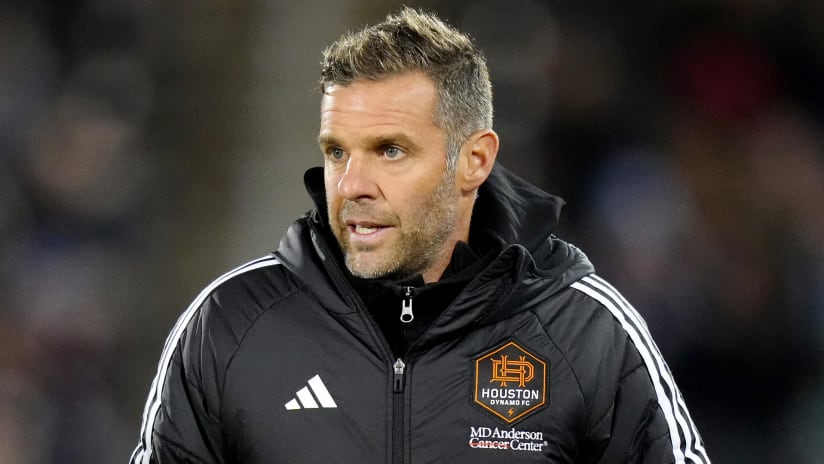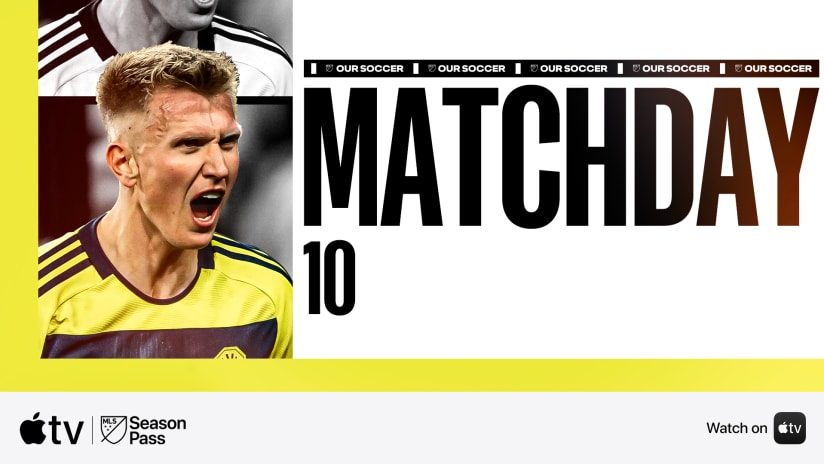I am fairly certain that FC Dallas are very good, but am just as certain they're one central defensive injury away from being very vulnerable and am starting to wonder if there's an underlying cause for the late goals they keep conceding. I love Portland's attack, but am concerned about their defense. The same can be said about Atlanta United, who are wildly entertaining but ride the edge like few MLS teams I've seen in the league's history.
Sporting KC's defense is immense, but their attack still lacks for goals. Columbus score goals, but leak too many – except for when Homegrown rookie Alex Crognale is on the field:
I thought the Sounders and Toronto would be the two best teams to start the year. They haven't been, as both are working through one stage of a postseason hangover or another, and dealing with one backline adjustment or another, and waiting for their respective No. 10s to be the best players on the field again.
Orlando City are owning it at home, but how does that make them any different than the Revs? The peculiarities of early-season MLS scheduling make false prophets of us all.
After seven weeks, not all that much is clear in this league of ours. Let's take a look at a couple of things:
The Recipe
The Red Bulls came out in a 4-2-2-2 to start the season, and then they kept falling behind. And then they would switch to a 4-2-3-1, and then they'd come back and take points.
That was the pattern, the recipe, for the first two weeks. Then they got left for dead in Seattle in the middle of March, and took one point at home against a listing RSL, and were scalped at Houston the week after that, and then the dam burst. New York trotted out in the 4-2-3-1 last week at Orlando and played fairly well in a tough 1-0 loss, and then this week they ran it out again in an "ok guys, let's all exhale"-level 2-0 home win over their hated rivals, D.C. United.

That's a network passing graph made using Opta data. Each circle represents the location of the corresponding player's aggregate touch, and the thickness of the lines connecting them represents the volume of passes they exchanged. It is a very narrow and kind of weird 4-2-3-1, but also fairly emblematic of a team that eschews the big switch in favor of direct play into the box. So if you're having luck building via the right side – or turning the opponent over on that flank – everybody scrunches over to that half of the field as much as is reasonable, including the nominal left winger (Daniel Royer, No. 77).
It wasn't the clinical, dominant RBNY team we saw win the Supporters' Shield in 2015, or the one that strung together a loooong unbeaten run to end 2016, but they didn't have to be. They just needed to be a touch more solid and intuitive than they had been at the start of this year, and to get Bradley Wright-Phillips (No. 99) into a little more space with just a little bit more time.
"With the guys we have, the comfort level is just higher in the 4-2-3-1,” captain and playmaker Sacha Kljestan told MLSsoccer.com's Kristian Dyer after the game. “Obviously it’s been over two years that we’ve been playing there and obviously I’ve been playing in that central spot for some time now. So, year the comfort level is higher.”
This doesn't mean the 4-2-2-2 is gone for good, and if the last two postseasons taught us anything it's that the Red Bulls need to have one other club in the bag. We'll still see it, selectively, from time to time.
But I do think that there's every reason to think we're done seeing the 4-2-2-2 from the opening whistle. The Red Bulls have a winning recipe with the 4-2-3-1, even if some of the ingredients have changed.
Blue Faces
San Jose started this season with four of their first six at home, and three of those four against conference foes. If things go right, this is a good way to get ahead of the curve, get ahead of the pack, and stake a claim at or near the top of the table. Witness: Orlando City SC.
Things didn't really go right for the Quakes. They won their first two, true enough, but after dropping a pair on the road came back to Avaya Stadium and posted a pair of costly 1-1 draws, last week against Seattle and this past week against FC Dallas. They were mirror-image games in that, in both, San Jose went down 1-0, and in both, they found the equalizer in the 90th minute or later.
Those equalizers keep this from being an out-and-out crisis, but with four of the next five and five of the next seven on the road, things will get ugly unless they can figure out where the goal is. Or how to find each other around the goal in the first place, because here's the passing map for San Jose's trio of forwards – Chris Wondolowski and Marcos Ureña start, with Danny Hoesen coming off the bench – in that Dallas draw:

They attempted 14 passes around the box, and completed four of them. Three of those were back-passes. That's not good enough for a 4-4-2 team, which by its very nature is built around the notion that its forward pairing will present consistent danger via their chemistry and ability to find space together.
There are some damn good things going on elsewhere. I'm all in on the Fatai Alashe-at-center-back experiment even though he was a step slow reading the danger on the Dallas goal, because his range compresses the amount of space the opposition has to work in, and because his distribution out of the back is an order of magnitude or three better than Victor Bernardez's. Putting Alashe and Florian Jungwirth in the central defense gives the Quakes a chance to really dictate, with the ball, where the game is played, and that's in the numbers: Dallas had only 32 percent of possession on Friday night, and completed just 59 percent of their passes. Part of that was their own doing (they always counterattack against the Quakes), but part of that was the Quakes playing better soccer than Dallas did.
The Anibal Godoy/Darwin Ceren central midfield holds promise even though Godoy's commitment to driving the game forward is maddeningly inconsistent, the fullbacks have been value adds on both sides of the ball, and over the last 20 minutes against Dallas Jahmir Hyka and Tommy Thompson, the two tiny, technical and mobile wide midfielders, constantly did fun stuff and got the ball into the final third. They were able to hold onto the ball and pull the Dallas lines of four around, creating gaps and opportunities.
Nobody, though, could create a win as the frontline was either too profligate or too disjointed. San Jose have been the league's lowest-scoring team over the last four seasons, and it's starting to feel like that song won't stop playing any time soon.
These Walls
Despite conceding another late goal Dallas will still get my vote for No. 1 in this week's Power Rankings, and No. 2 will go to Sporting KC. They went to Portland and got an entirely deserved 1-0 win over the Timbers, including this sequence:
So pretty. #PORvSKCpic.twitter.com/qps4Ngcys2
— Major League Soccer (@MLS) April 16, 2017
Sporting have been stringing together some pretty, pretty pretty moments so far in 2017, but the vast majority of those have come via sweeping, back-to-front movements (and many of those have lacked the final touch that turns "pretty" into "productive"). This is/was the first time I can remember them going HAM after a turnover forced in their own attacking half, and it speaks to their growing comfort with each other in attack. Gerso's movement has been better and crisper, and Dom Dwyer's starting to do Dom Dwyer things, and Jimmy Medranda may never score his second goal but he sure does get into good spots.
Obviously having Benny Feilhaber back and healthy helped, and the midfield trio with him, Roger Espinoza and Ilie Sanchez (who passes the ball like a dream) was damn near flawless.
It takes more than just good soccer to beat Portland, though. It takes the ability to neutralize – or at least contain – Fanendo Adi.
I don't want to jinx anything here since we all know Ike Opara's injury history, right? And he wasn't perfect vs. the Timbers, as there were a couple of moments when he tried to dribble out of his own end, and a couple of passes that went astray, and one time late in the game when Diego Valeri outfoxed him along the endline and forced a little emergency defense.
But Opara should be the MLS Player of the Week, and you could make a damn good case that he's the MVP thus far this season. SKC haven't lost and have conceded only twice all year, and just went on the road to shut out a team that was on pace to set the single-season mark for goals scored (even with the shutout the Timbers are still on pace for 78 goals, which would be the second-highest total in league history). Portland got nothing going in the box until throw-caution-to-the-wind desperation time – a theme against KC, and yes this kind of late danger means Peter Vermes should be more proactive with his subs – and Opara's the biggest reason why.
There is no such thing as a one-man defense in our game. Defenders don't win Player of the Week and certainly not MVP, and in general a great attacker is worth exponentially more than a great defender. But having a guy like Opara who can handle the strongest forwards in the league as easily as the quickest, who can track runners out of midfield, who is fast, quick and smart enough cover out to the wings when Graham Zusi pushes up from right back, who is good in reading the game and reliable in distribution, who is dominant in the air... that allows for a level of flexibility in game-planning other teams just don't have.
Sporting KC's defense is a wall, and Opara's the foundation. Upon it, they have layered shutouts, and points, and wins.
A few more things to ponder...
8. The Whitecaps remain the kings of Cascadia following their 2-1 win over visiting Seattle on Friday night. For the last three seasons we've conceptualized the 'Caps as a deep-lying, quick, counterattacking team. With Fredy Montero leading the line and Christian Bolaños as the No. 10 (for now), though, they really aren't that.
It'll be interesting to see how this team develops over the coming weeks and months. I'm not sure who they'll end up being.
7. I have to question the set piece assignments conjured by the LA Galaxy following their 2-1 loss at Orlando City. Cyle Larin is pretty easily OCSC's best target on restarts, but he's being marked by Jermaine Jones – at best third in the LA defensive pecking order in the air.
A cross-conference road loss isn't really that big a deal in the grand scheme of things, but these little details matter quite a bit in the long run.
6. Over the past few weeks I've mentionedDaniel Johnson's ability to combine through midfield and his off-the-ball movement. He's also got this – our Pass of the Week – in his bag:
#DanielJohnsonForeverpic.twitter.com/ELLTfkKmyy
— Matthew Doyle (@MattDoyle76) April 16, 2017
Chicago won pretty easily, 3-0 against the Revs after Je-Vaughn Watson got a "Hey guys I don't really feel like playing anymore" yellow in the 27th minute. Left back has been a major problem for New England this season.
5. I mentioned Crognale's effect on the Crew SC defense, which was a big part of their 2-1 win over Toronto FC on Saturday in Ohio. He's not much of a passer of the ball, but his physical presence in the area is something Columbus had been sorely lacking, and he has the quickness to come out and make defensive plays between the lines – an area where DP acquisition Jonathan Mensah struggled.
4. RSL have taken six points from the first two games of the Mike Petke era, including Saturday's come-from-behind 2-1 win at Colorado. It's still a 4-3-3 from the Claret-and-Cobalt, but the wingers seem to be playing a little bit higher and a little bit tighter than they were previously, and Albert Rusnak a little bit deeper. That's changed the balance of the attack just enough (and don't worry, RSL fans, I will provide you a longer look at PetkeBall in the coming weeks).
As for the Rapids... they've now conceded four goals in three home games this season. Last year they conceded seven in 17.
3. Montreal got their first win of the season,2-1 over visiting Atlanta United. Much of the talk will justifiably center upon the PK/red card double whammy the visitors incurred just before the break, but let's give the Impact at least a little bit of credit otherwise: They absolutely peppered Alec Kann's net even before the red card.
Getting Ignacio Piatti back obviously helped, but this is becoming at least a little bit of a trend for Atlanta, who've been outshot 55-23 over their last three games. Of course, those have all been road games against playoff-caliber teams, and they've done a good job by taking draws from Seattle and Toronto.
But as we saw last year with the Galaxy, getting outshot by a 2-to-1 margin (or worse) is not a way to sustainably get results.
2. The other expansion team, Minnesota United, picked up arguably the most impressive result of the weekend by digging out of a 2-0 hole to take a point away from Houston in a 2-2 draw.
This wasn't a fluke. The Loons have been consistently dangerous on the attack no matter who they've played or where, and while the defense is far from good (Francisco Calvo, what are you doing?) it's a damn sight better than it was in Weeks 1 & 2. Four of their next five are at home, so it'll be very interesting to see where they are in the standings a month from now.
1. And finally, our Face(s) of the Week:
David Villa, ladies and gents. He does stuff.
The Union once again had a spot-on gameplan, and turned NYCFC over a ton in the attacking half during the first 45 minutes. They once again, however, lacked what they needed to mold those forced turnovers into goals, and lost 2-0 at home to the visitors.



